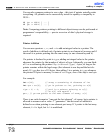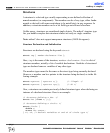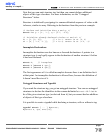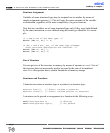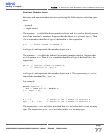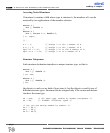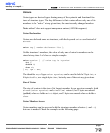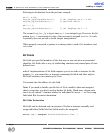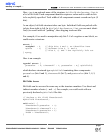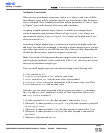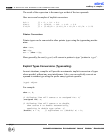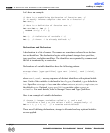
Referring to declarations from the previous example:
mu.d = 4.016;
Lcd_Out_Cp(FloatToStr(mu.d));
// OK: displays mu.d = 4.016
Lcd_Out_Cp(IntToStr(mu.i));
// peculiar result
pm->i = 3;
Lcd_Out_Cp(IntToStr(mu.i));
// OK: displays mu.i = 3
The second Lcd_Out_Cp is legal, since mu.i is an integral type. However, the bit
pattern in mu.i corresponds to parts of the previously assigned double. As such,
it probably does not provide a useful integer interpretation.
When properly converted, a pointer to a union points to each of its members, and
vice versa.
Bit Fields
Bit fields are specified numbers of bits that may or may not have an associated
identifier. Bit fields offer a way of subdividing structures into named parts of user-
defined sizes.
mikroC implementation of bit fields requires you to set aside a structure for the
purpose, i.e. you cannot have a structure containing bit fields and other objects.
Bit fields structure can contain up to 8 bits.
You cannot take the address of a bit field.
Note: If you need to handle specific bits of 8-bit variables (char and unsigned
short) or registers, you don’t need to declare bit fields. Much more elegant solu-
tion is to use mikroC’s intrinsic ability for individual bit access — see Accessing
Individual Bits for more information.
Bit Fields Declaration
Bit fields can be declared only in structures. Declare a structure normally, and
assign individual fields like this (fields need to be unsigned):
struct
tag
{ unsigned
bitfield-declarator-list
; }
mikroC
- C Compiler for Microchip PIC microcontrollers
mikroC
making it simple...
80
MikroElektronika:
Development
tools
-
Books
-
Compilers
page



